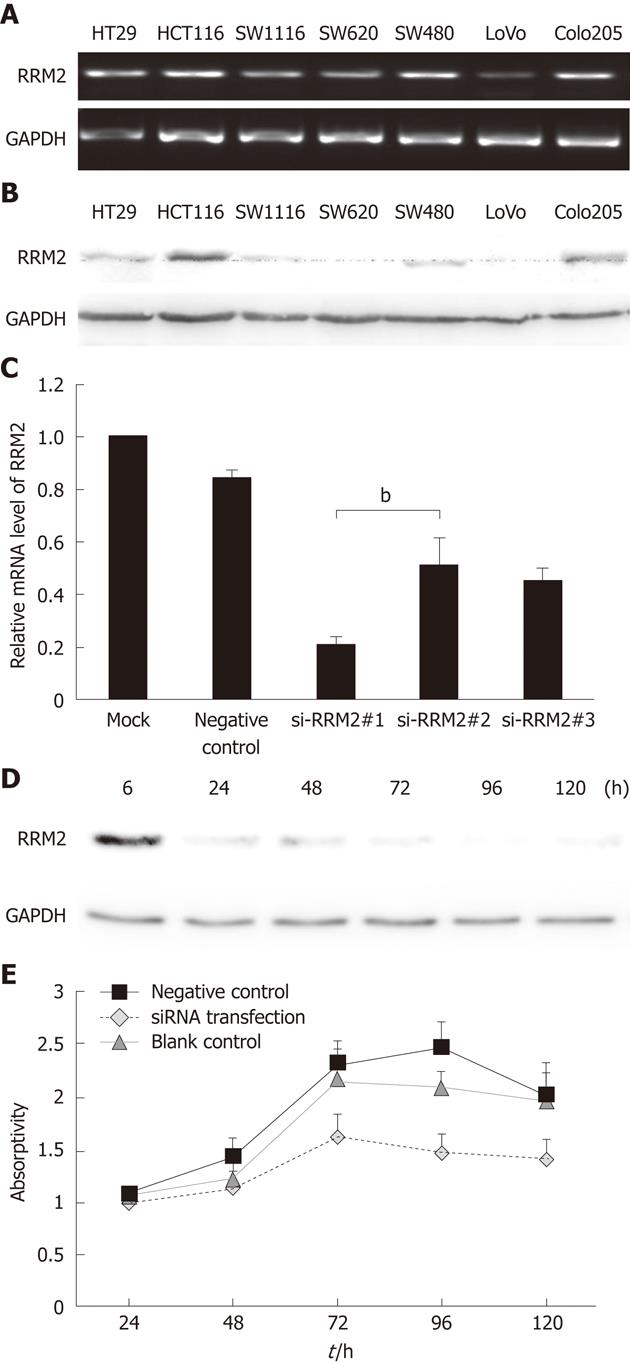Copyright
©2012 Baishideng Publishing Group Co.
World J Gastroenterol. Sep 14, 2012; 18(34): 4704-4713
Published online Sep 14, 2012. doi: 10.3748/wjg.v18.i34.4704
Published online Sep 14, 2012. doi: 10.3748/wjg.v18.i34.4704
Figure 2 Expression of ribonucleotide reductase M2 in colorectal carcinoma cell lines and effect of ribonucleotide reductase M2 depletion on cell proliferation.
A: Ribonucleotide reductase M2 (RRM2) expression in seven colorectal cancer (CRC) cell lines (PCR analysis); B: Expression of RRM2 protein in seven CRC cell lines (Western blotting); C: 48 h after siRNA transfection, relative mRNA level of HCT116 was determined (mock: lipofectamine only, negative control: lipofectamine + control siRNA), bP < 0.01 si-RRM2#1 vs si-RRM2#2; D: HCT116 cells were transfected with si-RRM2#1 and cultured for 120 h. Cells were lysed and RRM2 protein levels were detected by Western blotting. Glyceraldehyde 3-phosphate dehydrogenase expression was used to control equal protein loading; E: At 24-120 h after siRNA transfection, the viability of HCT116 cells was determined by the CCK-8 assay. Analysis of cell growth in the presence or absence of RRM2 siRNAs revealed that blocking RRM2 protein synthesis significantly inhibited HCT116 cell growth. GAPDH: Glyceraldehyde 3-phosphate dehydrogenase.
- Citation: Lu AG, Feng H, Wang PXZ, Han DP, Chen XH, Zheng MH. Emerging roles of the ribonucleotide reductase M2 in colorectal cancer and ultraviolet-induced DNA damage repair. World J Gastroenterol 2012; 18(34): 4704-4713
- URL: https://www.wjgnet.com/1007-9327/full/v18/i34/4704.htm
- DOI: https://dx.doi.org/10.3748/wjg.v18.i34.4704









